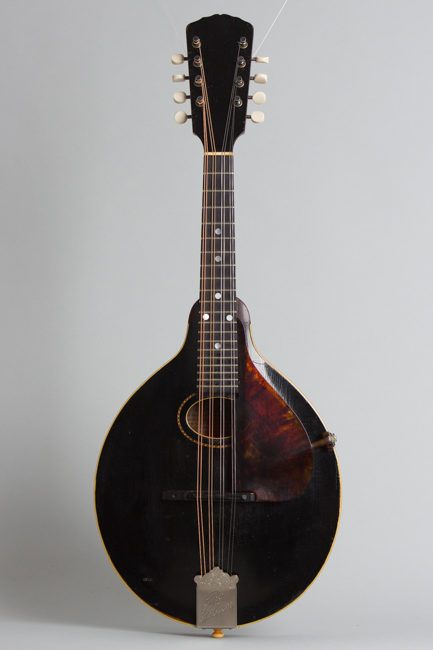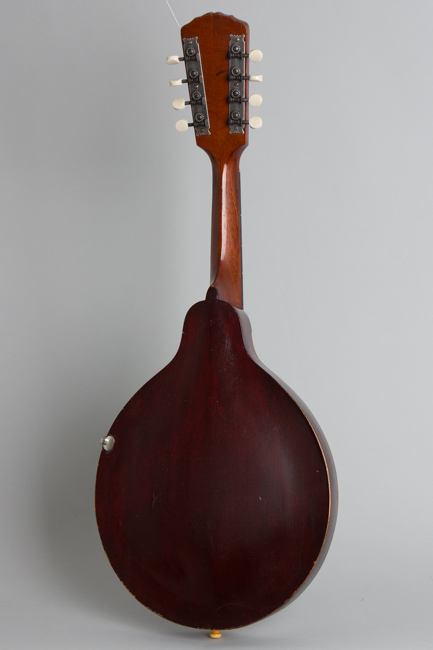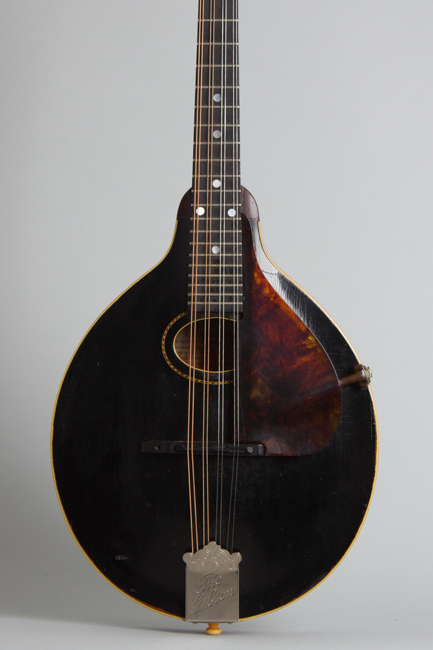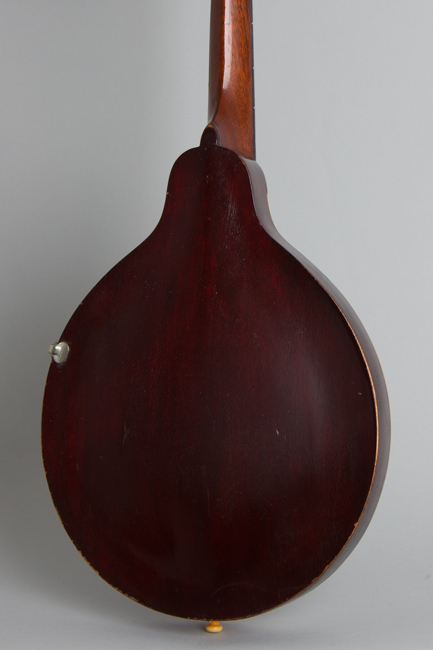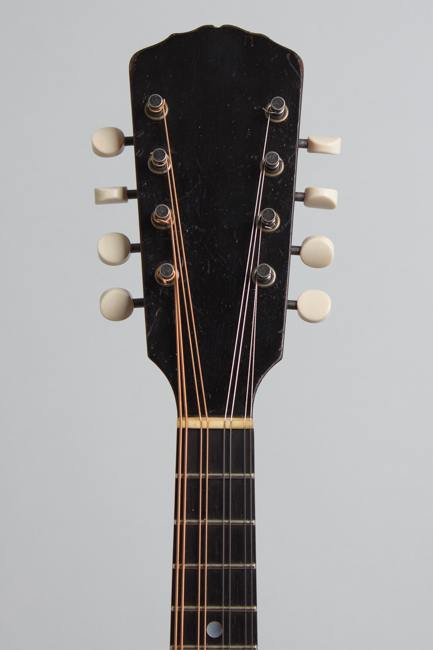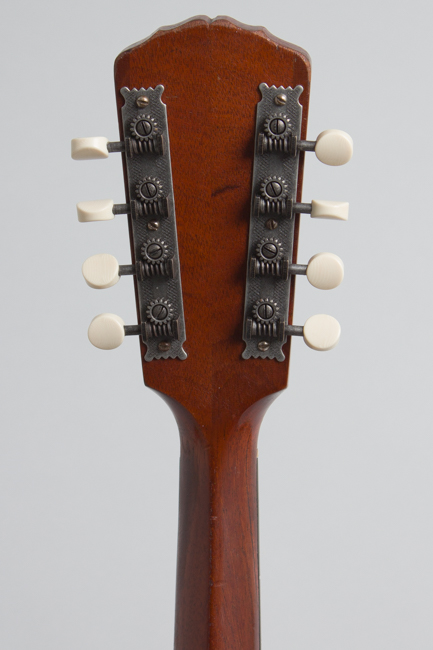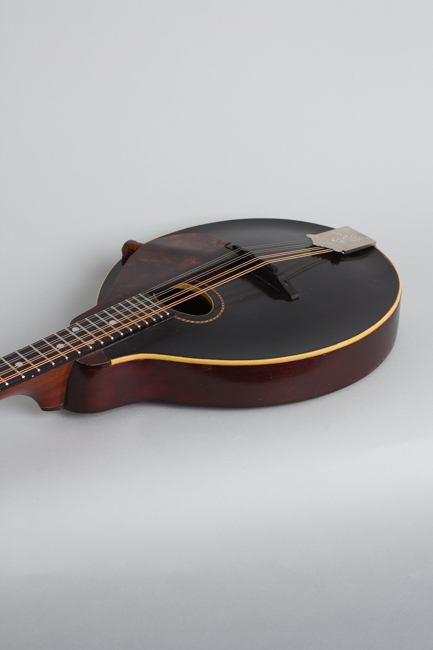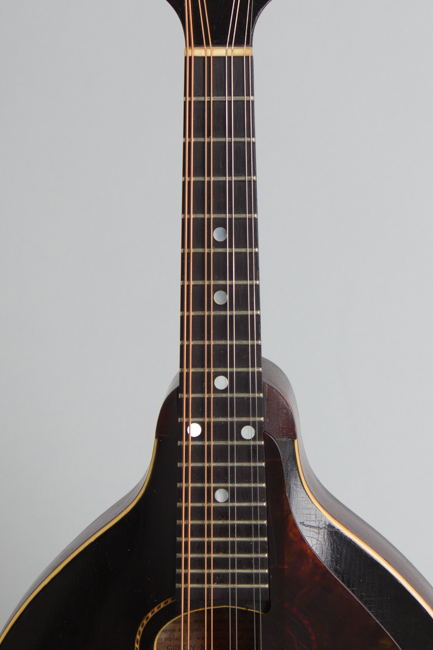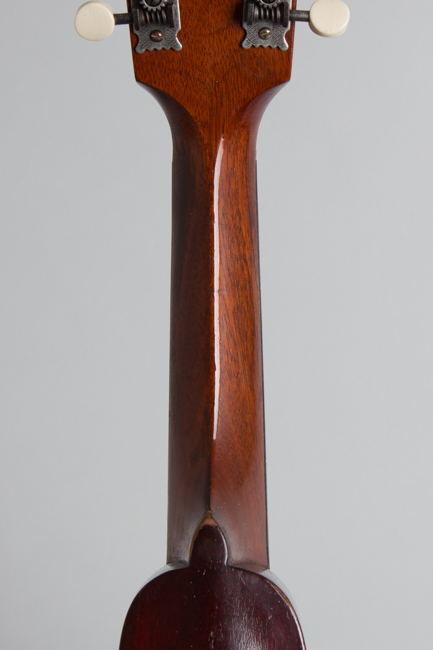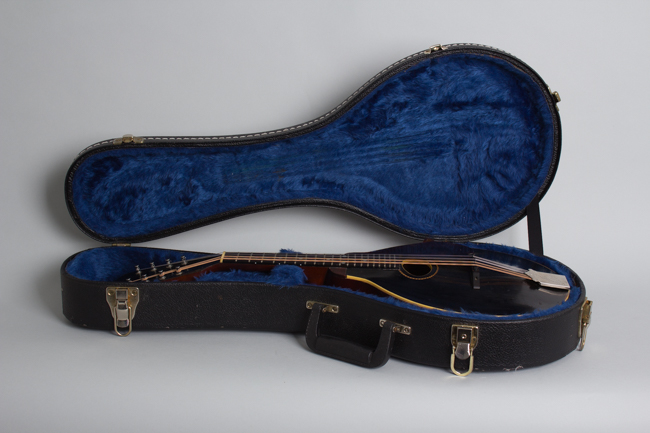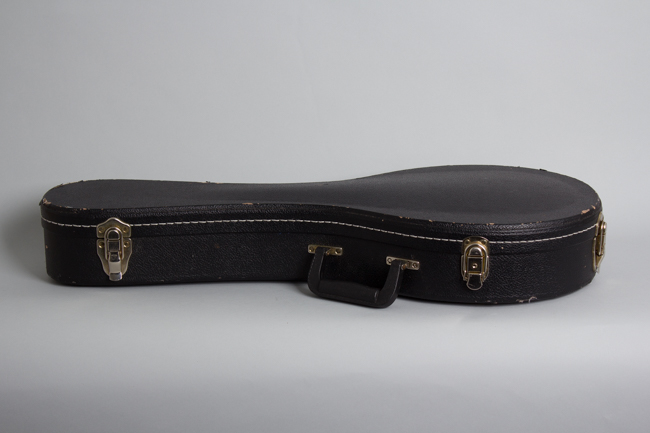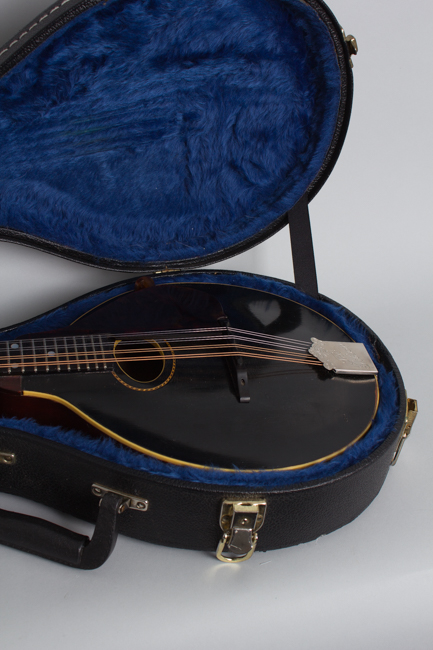Gibson Style A- Carved Top Mandolin (1911)
This item is currently on hold.
Item # 12856
Prices subject to change without notice.
Gibson Style A- Model Carved Top Mandolin (1911), made in Kalamazoo, Michigan, serial # 14729, natural top, cherry stained back and sides finish, Spruce top, birch back and sides, mahogany neck, ebony fingerboard, black tolex hard shell case.
This is a fairly early example of a "modern" Style A- dating to the end of 1911/beginning of 1912 when Gibson was just becoming THE major force in the mandolin market. Styles A and A-1 were Gibson's lowest priced carved-top mandolins for much of the company's early history, distinguished from each other only by minor decorative touches. By 1910 the instruments had a somewhat higher bridge and sharper neck angle than earlier versions, a major step in developing the classic Gibson sound offering more power and definition compared to just a year or two earlier. This one also features the then brand-new elevated pickguard instead of one inlaid into the top.
The distinguishing feature of the "A-" is the lack of a pearl "The Gibson" script logo on the headstock. The carved spruce top is finished in ebony varnish over a dark-stained birch body, typical of Gibsons of this era. The soundhole is bordered with a single half-herringbone ring, it and the top are single bound. The mahogany neck is one piece without any laminated center insert and has a thick unbound dot-inlaid ebony fingerboard.
The five-digit serial number is stamped on the early white "Guarantee" label, which had by then replaced the more eccentric earlier one showing Orville peering out through the soundhole holding his signature lyre-mandolin. This instrument also has the newer standard tailpiece cover recently adopted. This mandolin is in fine playing condition for being nearly 115 years old and is a lovely sounding playable piece of Gibson history.
Overall length is 25 1/2 in. (64.8 cm.), 10 in. (25.4 cm.) across at the widest point, and 1 7/8 in. (4.8 cm.) in depth, measured at side of rim. Scale length is 14 in. (356 mm.). Width of nut is 1 1/16 in. (27 mm.).
This mandolin shows signs of over a century of use but remains a fine player, with a lovely well-rounded ringing sound. The very thin varnish finish shows micro-checking and general wear overall, and is mostly worn from play through to the wood on the back of the neck and lower turn of the body by the heel. This varnish is actually fairly shiny in appearance, but does not appear to have been overfinished at any point. It shows numerous dings, dents and scrapes with a few touchups to the ebony top but less pickwear than many. The headstock face has numerous dings and scratches.
The back/side seams of the body have been re-sealed as is typical, with a couple of attendant smaller sealed cracks around the tailblock. The top has no cracks but a few deeper scratches. The hardware is a mixed bag with the tailpiece and pickguard (that is often missing!) remaining original but correct repro tuners and a modern adjustable Brekke style bridge. The mandolin has been neatly refretted and plays very well, sounding louder yet still warmer than many early models we have encountered. It is housed in a modern HSC. Very Good + Condition.
This is a fairly early example of a "modern" Style A- dating to the end of 1911/beginning of 1912 when Gibson was just becoming THE major force in the mandolin market. Styles A and A-1 were Gibson's lowest priced carved-top mandolins for much of the company's early history, distinguished from each other only by minor decorative touches. By 1910 the instruments had a somewhat higher bridge and sharper neck angle than earlier versions, a major step in developing the classic Gibson sound offering more power and definition compared to just a year or two earlier. This one also features the then brand-new elevated pickguard instead of one inlaid into the top.
The distinguishing feature of the "A-" is the lack of a pearl "The Gibson" script logo on the headstock. The carved spruce top is finished in ebony varnish over a dark-stained birch body, typical of Gibsons of this era. The soundhole is bordered with a single half-herringbone ring, it and the top are single bound. The mahogany neck is one piece without any laminated center insert and has a thick unbound dot-inlaid ebony fingerboard.
The five-digit serial number is stamped on the early white "Guarantee" label, which had by then replaced the more eccentric earlier one showing Orville peering out through the soundhole holding his signature lyre-mandolin. This instrument also has the newer standard tailpiece cover recently adopted. This mandolin is in fine playing condition for being nearly 115 years old and is a lovely sounding playable piece of Gibson history.
Overall length is 25 1/2 in. (64.8 cm.), 10 in. (25.4 cm.) across at the widest point, and 1 7/8 in. (4.8 cm.) in depth, measured at side of rim. Scale length is 14 in. (356 mm.). Width of nut is 1 1/16 in. (27 mm.).
This mandolin shows signs of over a century of use but remains a fine player, with a lovely well-rounded ringing sound. The very thin varnish finish shows micro-checking and general wear overall, and is mostly worn from play through to the wood on the back of the neck and lower turn of the body by the heel. This varnish is actually fairly shiny in appearance, but does not appear to have been overfinished at any point. It shows numerous dings, dents and scrapes with a few touchups to the ebony top but less pickwear than many. The headstock face has numerous dings and scratches.
The back/side seams of the body have been re-sealed as is typical, with a couple of attendant smaller sealed cracks around the tailblock. The top has no cracks but a few deeper scratches. The hardware is a mixed bag with the tailpiece and pickguard (that is often missing!) remaining original but correct repro tuners and a modern adjustable Brekke style bridge. The mandolin has been neatly refretted and plays very well, sounding louder yet still warmer than many early models we have encountered. It is housed in a modern HSC. Very Good + Condition.
